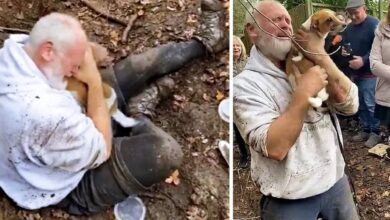Tragedy Strikes: Suspension Bridge Collapse Claims Dozens of Lives and Leaves Community in Mourning

In a devastating turn of events, a suspension bridge that once stood as a symbol of engineering pride and scenic beauty collapsed unexpectedly, leaving behind sorrow, unanswered questions, and an urgent call for safety reforms. Authorities have confirmed that at least 30 people lost their lives in the collapse, with dozens more injured and several still missing. What was supposed to be a day of sightseeing and leisure for families, travelers, and locals transformed into one of the darkest chapters in the region’s history.
The collapse has not only shaken the immediate community but has also sparked national and international attention. Questions about infrastructure safety, maintenance standards, and government accountability are dominating discussions, while families of victims grieve and survivors struggle to process the trauma of what they endured.
A Scenic Day That Turned Into Disaster
The suspension bridge was one of the most popular attractions in the area. Stretching across a wide river and offering breathtaking views of the landscape, it attracted visitors year-round—locals enjoying weekend outings, tourists capturing photos, and families eager to share the experience with their children.
On the morning of the collapse, witnesses reported that the bridge was filled with both pedestrians and vehicles. Some were walking leisurely, others were taking pictures, and families with children were enjoying the day. But within moments, the atmosphere of joy and relaxation transformed into chaos and fear.
Several survivors described hearing loud cracking sounds echoing through the structure just seconds before the bridge gave way. In a matter of moments, steel cables snapped, wooden and concrete sections crumbled, and the once-stable path collapsed into the rushing river below.
The scene that followed was one of desperation. People scrambled to hold on to whatever they could. Some managed to cling to remaining portions of the bridge, while others fell into the river and fought against the current. Nearby residents and boat operators rushed to assist even before official rescue teams could arrive.
Immediate Rescue Efforts
Within minutes of the collapse, emergency services were dispatched to the site. Helicopters, boats, and ambulances converged on the area, working tirelessly to rescue survivors and recover those trapped under debris. Hospitals in surrounding cities declared emergency protocols, preparing to treat large numbers of severely injured victims.
Doctors later reported a range of injuries, from broken bones and deep cuts to more severe trauma. Despite the chaos, first responders were credited with saving numerous lives. “Every second mattered,” one rescue worker explained. “The teamwork and determination on the ground and in the air made it possible to bring people to safety.”
Community volunteers also joined the effort. Local fishermen used their boats to pull survivors from the water, while nearby residents provided blankets, water, and emotional support to those waiting for updates on missing loved ones.
Mourning and Community Response
The emotional toll of the disaster has been immense. Vigils were held the same evening, where people gathered with candles to honor those who lost their lives. Churches, mosques, and community centers opened their doors for prayers and memorials. Flags across the region were lowered in respect.
Families who lost loved ones are struggling to come to terms with the sudden tragedy. Support groups and counseling services have been mobilized to help grieving relatives, while social organizations are raising funds for medical expenses, funeral costs, and survivor rehabilitation.
One grieving mother described the loss of her son as “a wound that will never fully heal.” Yet she, like many others, expressed gratitude to the community members and emergency workers who risked everything to help.
Investigation Into the Cause
Officials have launched a comprehensive investigation into what caused the collapse. Structural engineers and safety experts are examining inspection records, maintenance logs, and construction documents. Eyewitness accounts about hearing cracks before the collapse are being reviewed, alongside video footage from tourists and nearby surveillance cameras.
Initial reports suggest that the bridge, though a celebrated landmark, had been in service for decades. Questions are being raised about whether proper maintenance was carried out consistently, whether inspections were thorough, and whether warnings of wear and tear may have been overlooked.
Authorities have temporarily closed several similar suspension bridges in the region until safety inspections can be completed. “We cannot risk another tragedy,” a government spokesperson announced. “Every structure of this kind will undergo a full review to ensure public safety.”
Impact on Tourism and the Local Economy
The bridge was more than just a piece of infrastructure; it was a driver of tourism and local economic activity. Surrounding restaurants, small shops, and hotels thrived because of the visitors the bridge attracted. Its sudden collapse has not only left emotional scars but also threatens to destabilize the local economy.
Tour operators have reported cancellations, and some businesses have closed temporarily out of respect for the victims. While economic recovery is not the immediate priority, community leaders are already considering how best to support businesses and rebuild confidence in the region’s attractions.
Lessons From Past Disasters
Unfortunately, the collapse is not the first of its kind in history. Around the world, bridge failures have occurred when engineering flaws, natural disasters, or lapses in maintenance aligned. In each case, investigations emphasized the same point: infrastructure must be regularly inspected, maintained, and updated to prevent future catastrophes.
Experts stress that while no structure is immune to time and wear, preventive measures can drastically reduce risks. “Bridges are lifelines,” explained one civil engineer. “They connect communities and economies. But when neglected, they can turn into hazards instead of assets.”
Government Promises and Public Trust
In the aftermath of the collapse, government officials have pledged transparency, accountability, and reforms. They have promised that no detail will be hidden from the public and that every lesson from this tragedy will be applied to prevent a recurrence.
But for many citizens, trust in public infrastructure has been shaken. Parents who lost children and survivors who narrowly escaped are demanding that officials not only investigate but also implement strict safety measures going forward.
This includes:
-
More frequent inspections of aging infrastructure.
-
Transparency of reports, allowing the public to access safety records.
-
Funding for modernization projects to replace outdated structures.
-
Training for emergency responses to reduce casualties if accidents occur.
Acts of Heroism Amid the Chaos
Even in tragedy, stories of bravery have emerged. Several survivors recalled strangers who risked their own lives to help others. A local fisherman jumped into the river to rescue a child struggling against the current. A group of young men formed a human chain to pull several injured people out of the water.
These acts of selflessness have been praised across the country, serving as reminders of humanity’s resilience and compassion even in the darkest moments. Local leaders have suggested honoring these individuals in future memorials.
Looking Ahead: Rebuilding and Healing
As investigations continue and families mourn, the road to healing will be long. Rebuilding public trust, supporting victims, and addressing economic fallout are challenges that will take years, not months, to resolve.
Yet there is also determination in the community. Plans are being discussed to create a permanent memorial at the site of the collapse to honor those who lost their lives. Engineers and architects are also debating the possibility of constructing a new, safer bridge in the future—one that symbolizes resilience and a renewed commitment to safety.
Final Reflections
The suspension bridge collapse has left behind a legacy of grief, but also a wake-up call for governments, engineers, and citizens everywhere. It reminds us of the fragility of life and the responsibility societies bear to ensure safety in the infrastructure people depend on daily.
While families mourn their loved ones and survivors work toward recovery, the larger community is left with a collective mission: to learn from this tragedy, to support one another, and to demand accountability and action so that such a disaster is never repeated.
This event will not be forgotten. It stands as both a heartbreaking loss and a rallying point for change.





